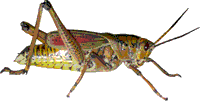Entomology Collections, Miscellaneous
Date of this Version
1966
Abstract
The stable fly, Stomoxys calcitrans (L.), or dog fly, as it is commonly called in northwest Florida, has been a serious nuisance in that area for many years. Blakeslee (1945) found that DDT gave effective control when it was applied as a residual spray to larval breeding areas in marine grass deposits. However, in recent years this method has not provided the degree of control necessary. As a result, large numbers of adult flies have at times seriously affected the tourist industry of northwest Florida. On the basis of our work, and that of others, with thermal fogs for mosquito control, we felt that this method might be used effectively for rapid elimination or reduction of adult stable fly populations. As a preliminary step to evaluating this method, we determined the toxicity of a large number of insecticides to stable flies in laboratory tests. From these we selected four chemicals for thermal fog tests in the field with caged stable flies: malathion, fenthion, naled, and Bayer 39007 (o-isopropoxyphenyl methylcarbamate). This paper presents the results of our laboratory and field tests with these compounds.


Comments
Published in The Florida Entomologist, Vol. 49, No. 3 (Sep., 1966), pp. 169-173.